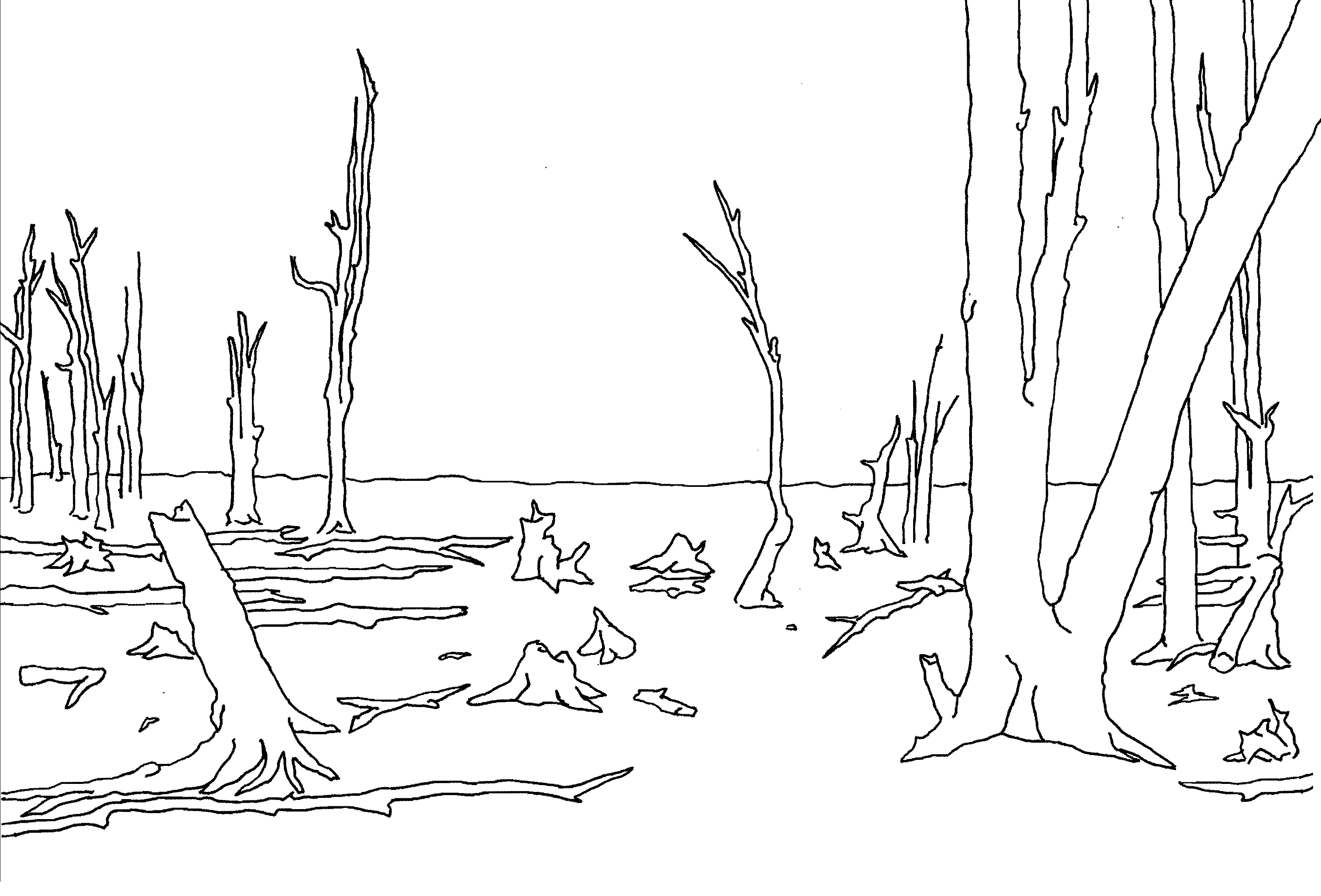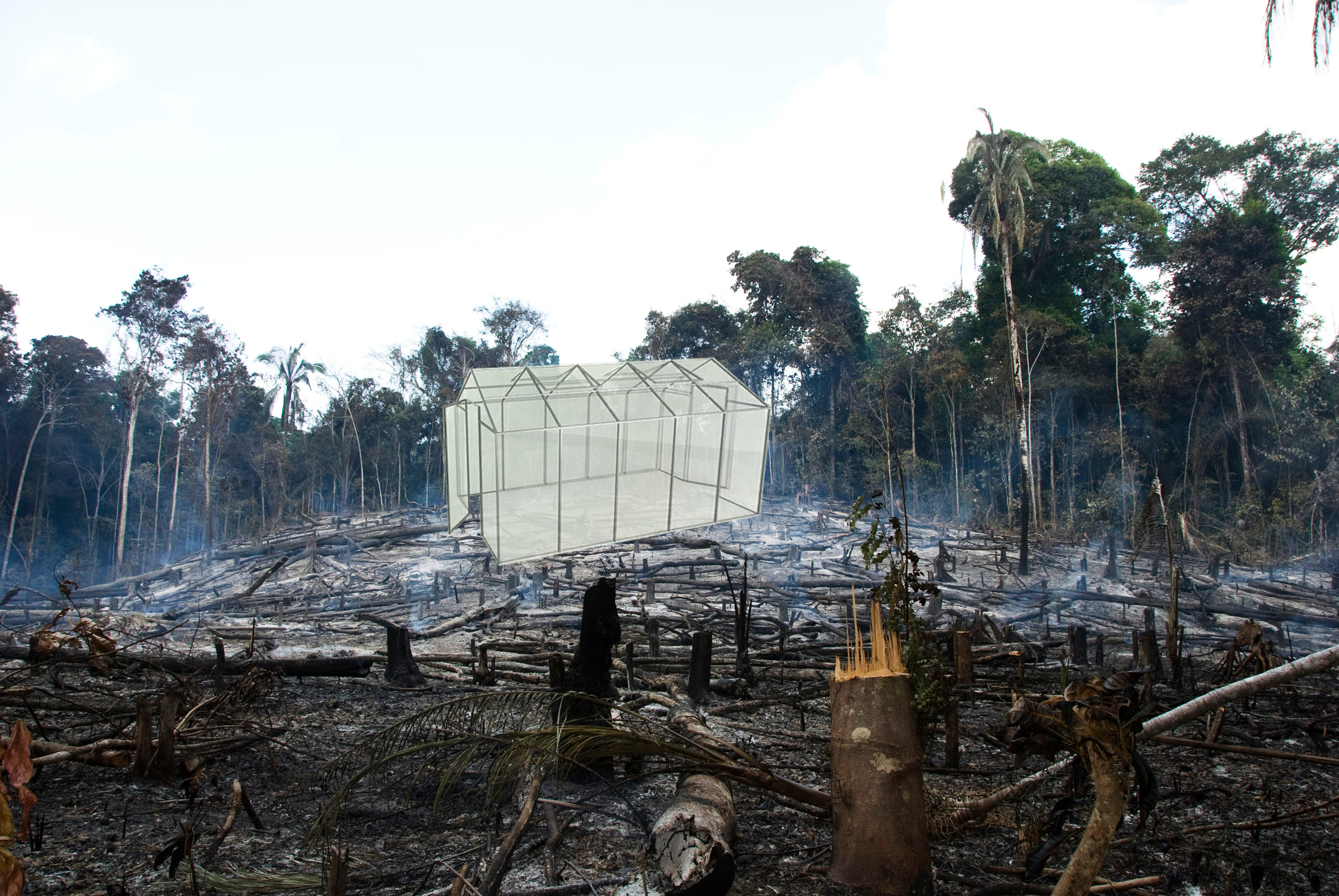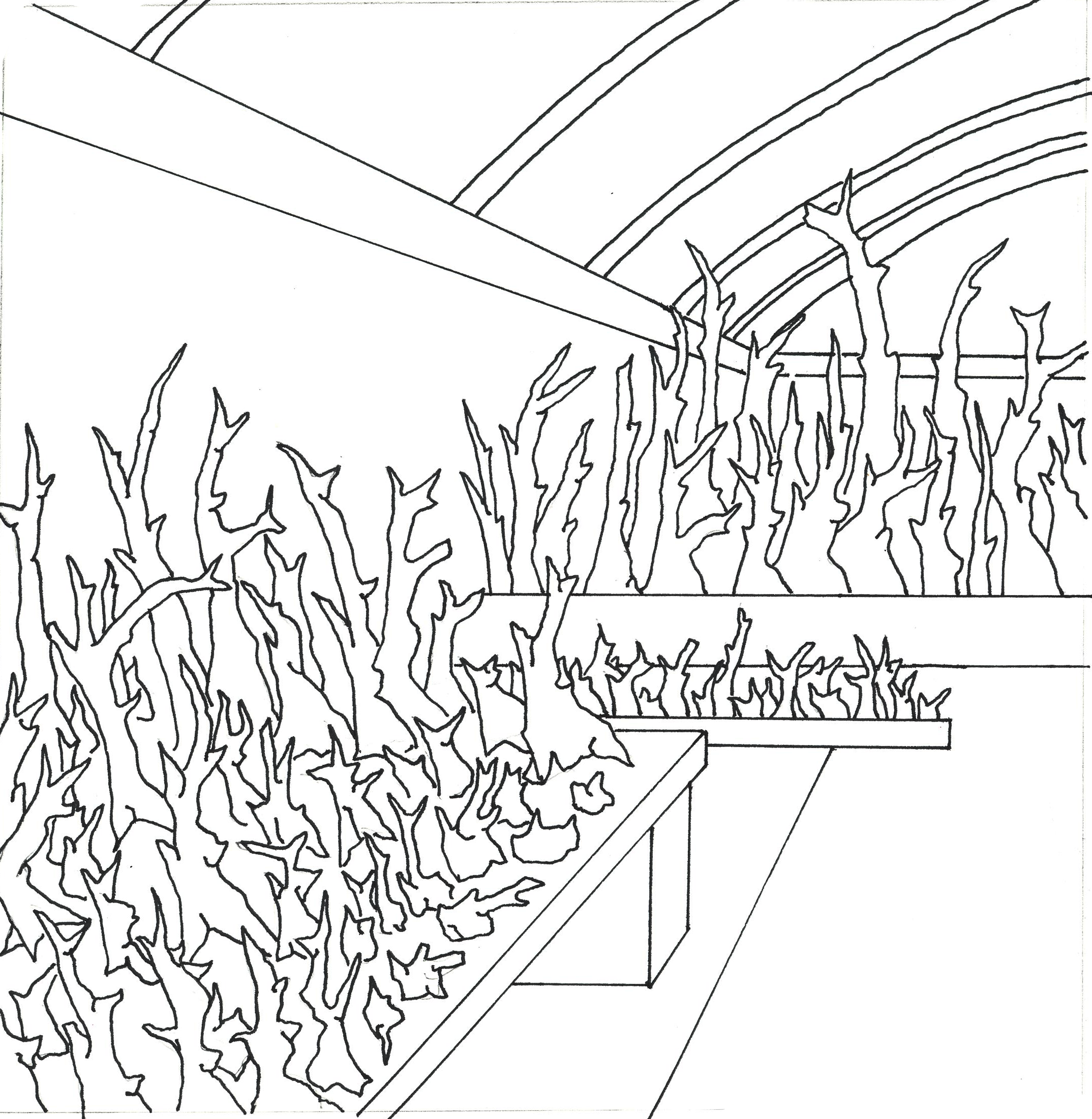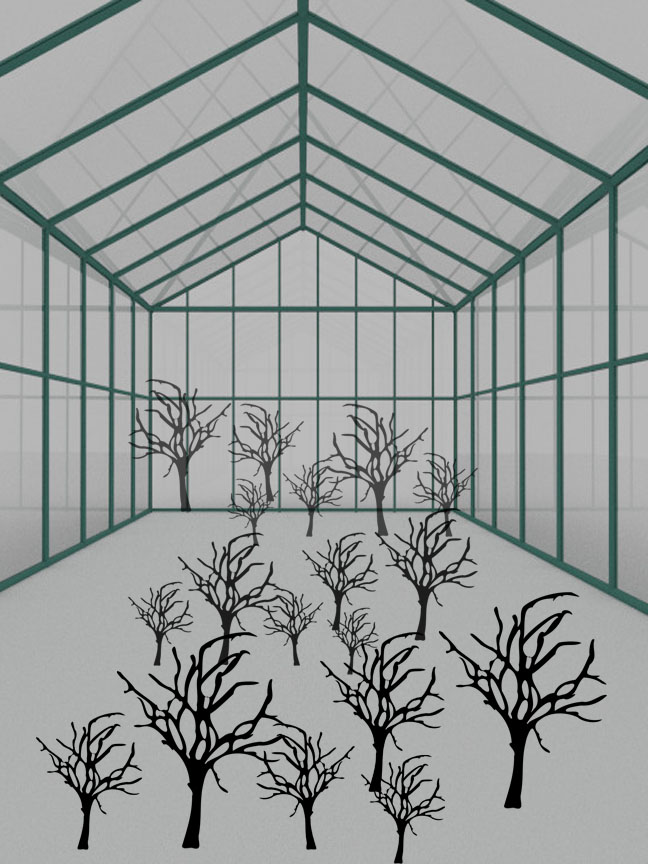Isn't it ironic how modern physics seeks reality is in its most fundamental form, and yet we're entirely incapable of comprehending these fundaments beyond the math we use to signify them.To comprehend the universe we must simply refer to analogy. Irony was the source of inspiration for our Green House project purposed to sell charred and burnt remains of previous existing plants. Encouraged by Tom Swetnam's environmental science lecture on forest fires and extreme heat waves, we set out to showcase subjects of destruction and decay in massive numbers by simply building a dead nursery home in a deforested area. In relation to the article, "The Future of Science is Art?" is an approach to juxtapose the way we artists and scientists can help each other. Our goal in this project is to allow us to judge our knowledge of the matter not by its origins, but in terms of its usefulness. As Richard Feynman put it, “Our imagination is stretched to the utmost, not, as in fiction, to imagine things which are not really there, but just to comprehend those things which are there.” Visual literacy of the damage being made will be provided to inspire people to make a difference in our environments ongoing greenwashing dilemma. By interpreting scientific ideas and theories, the arts offers science a new lens through which to see itself. Before you break something apart, it helps to know how it hangs together, which is the solitary purpose of our green house proposal. As we unmask business and corporations from their filthy “going-green” lies, we intend to capture the audience attention by selling the reality of our infected environment. In today’s world, science is widely considered to be our sole source of truth, we modestly propose a choice for our viewers: buy the truth, or be sold a lie.

Taking inspiration from the necessity for environmental change - what if one were presented with the subjects of destruction and decay in massive numbers? Tom Swetnam showed the histories of sequoia trees who outlived wildfires. These trees had “fire scars” within the sections removed from the trunk. These fires are more becoming more intense thanks to droughts and human interference. All of these phenomena interact with each other that is only amplified by human influence on global warming. The effects of climate change are further made invisible by the “business as usual” attitude of capitalism’s worldwide influence. The major contributors of greenhouse gases and fresh resource usage goes to creating products to be sold by corporations. And these corporations utilize the trend of environmentalism by “going green”, greenwashing, in order to appease customers and continue making a profit.
We aim to mimic greenwashing on an ironic, micro-scale by creating a greenhouse style nursery filled with damaged, decaying, or dead trees. The exhibit will take place on deforested ground that is selling the remains of the original life that grew there in the first place. This space will symbolically resemble how greenwashing is related to the commodification of death. We can extrapolate that the damage to the planet is a death of it’s own. What is the value of decaying or fleeting life? We pay for products that are expected to be on the shelf for six months to a year. We pay for the future death of our own bodies, for our families and friends to grieve for us, for the preparations and containers of our corpses. We may purchase dead animals for eating, categorized by labels created for food markets (example: pork vs. pig). Or we may purchase imported products from countries who condone discrimination and segregation, which leads to violence. Upon the expansion of this theme, viewers may personify or derive any other associations of death that is funded by their dollars in a small way. Viewers will be encouraged to purchase tree remnants with the consolation that they are doing good for the planet - “1% of all proceeds go towards rebuilding forests”. Are we, as the artists, to be trusted given the context of this space?

A thriving forested area is the site for our project. A flat ground is required for the building of a structure. The location of the green house would be on a charred, burnt part of a forest. The destroyed, burnt trees and plants are kept for later display. A concrete base is laid and building materials including plastic sheets and metal rods are brought in for the construction of a green house exterior structure. Wooden shelves are loaded into the building and are arranged in rows allowing room for people to walk through. The dead trees and plants are then displayed on the shelfs for people to view and eventually buy.
The trees are asestically displayed so potential buyers can take in the whole experience as they walk through the isles of the greenhouse. The main focus is letting the buyers know that they are helping out forests by purchasing these trees. They are constantly reminded that “1% of all proceeds go towards rebuilding forests,” and we stand by that statement.
In the article the “the future of science”, Jonah Leher tries to show the benefits of two cultures combining for the better. Referencing to many historic figures, Jonah speaks of the advantages of joining cultures. “Artists [painters] are in some sense neurologists, studying the brain with techniques that are unique to them.” This quote spoke to me in the sense that we are all alike and can use each other in so many helpful ways. Artist are full of data that lies in the blind spots of scientist which can be joined to make the best possible outcomes.

The selling of death represented through foliage would be contributing to the conversation of climate change. The use of parodied greenwashing is used to get the viewer to think of the impact of "green" initiatives by companies. As Dr. Michael Doser is quoted in Ariane Koek's article "Cern: where art and science collide", "they [artists] are just as fascinated by side routes and diversions as they are by the direction in which they are going." The talk was about how to stop forest fires in a particular region, and instead of physical things that actually helped that region, we got people thinking about greenwashing and forest fire, which is another route to take to reduce the source problem of climate change. The project contributes to the scientific inquiry in the action it takes, though different than any proposed by the presenter.
This piece confronts the audience with an ironic yet strong image. A “charity” project which essentially sells death to consumers under the guise of righteousness, reminding the audience of other companies’ use of similar tactics, though not selling death as directly as we would plan to, but in a more subtle way. These companies will use “eco friendly” marketing which puts the company in a favorable light, when in reality they may be cashing in on a trend. It is this profit based on the death of the earth that sparked the elements of commodification of death seen in our project. This piece contributes to the scientific conversation by inspiring thought in the audience, and thought is required for progress.

